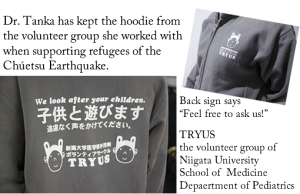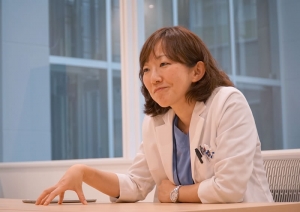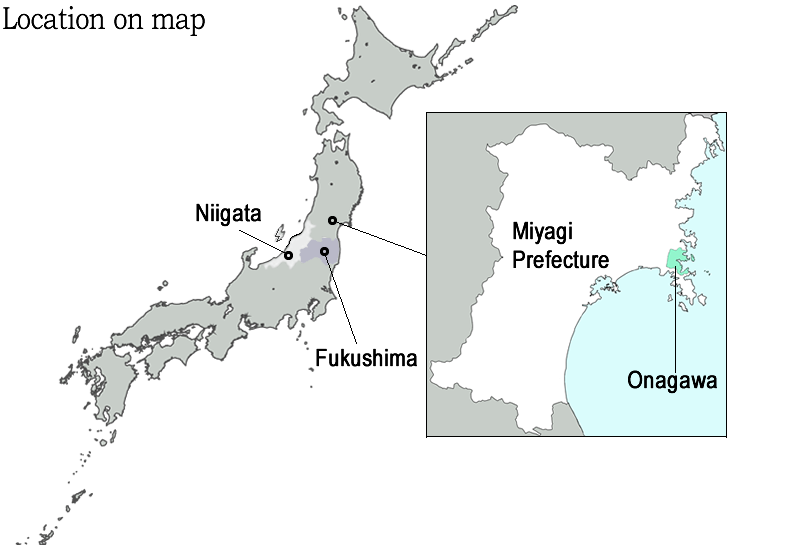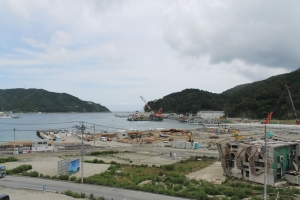Internal and Disaster Medicine Integration (Part3 of 3)
Nicole Gunawansa | June 5th, 2015
This interview was held on April 15th, 2015 in Tohoku Medical Megabank Building
Part 3- Promoting Prosperity in Affected Communities
Question 7: What additional concerns do you believe have been brought about after the Great East Japan Earthquake? How are communities dealing with these problems?
Connecting the events of 2004 and 2011, I know that there were 20,000 people living in the greatest affected areas of Niigata in 2004, but ten years later about that number continue to live there. While the number of newborns in Yamakoshi (the Niigata earthquake epicenter, population around 2000 people) was about 50 per year in 2004, now there are no newborns because young people have left. People moved away even though they did not lose their houses. Although this information has not been reported in the media, it demonstrates a serious trend in areas badly affected by natural disasters. So I wonder what about what the situation will be in the Tohoku area 10 years from now. In Onagawa, thirty percent of people have already left. The core members of the town (mayor and town members) have tried to prevent the decrease in population, and they fear the population drain. Often the elderly are those who remain, and thus they do not receive the necessary aid by the younger generations.  Through my work, I try to aid those remaining town members.
Through my work, I try to aid those remaining town members.
Additionally, I believe that we have to share information among many cities which have experienced major disasters, including those outside of Japan. For that reason, I really wanted to participate in this English interview. By using English, we Japanese can convey our thoughts and communicate with many places around the world. If I had had external information during 3/11, I could have learned how to join a medical relief team rapidly, but that information was not accessible. I trust that Tohoku University can help promote this type of collaboration.
Question 8: What additional projects would you like to see Tohoku Medical Megabank Organization take on in the future?
I like the ToMMo system for its good communication and collaboration with various labs and professors. Nevertheless, I think that ToMMo could benefit from increased distribution of understandable information to ‘normal’ (non-research, medical, disaster professional) people because we do not know when the next disaster will occur and we need to keep the public well informed. ToMMo’s public relations department is so important, and has the power to encourage doctors to adapt an increased transparency approach. I would also like to see increase partnering with other non-medical fields. Collaboration with other areas to increase a more holistic approach to disaster medicine can help solve problems creatively, improve resourcefulness in the field of disaster medicine.
Question 9: In what ways do you think you, or your work has changed from the time of the disaster? Additionally, how far do you think Japan has come since 3/11?
As the only person in ToMMo having experienced two disasters  within the last fifteen years, I know that more earthquakes are to come. I feel more passionate to have discussions in this area to help better prepare the future generations. After 3/11, I have a drive to solve disaster problems via internal medicine. I saw a lot of emotional turmoil in patients after the 2011 disaster, and knew I wanted to become more knowledgeable in disaster medicine so I can help others cope with their emotions. Increase integration of disaster medicine and psychiatry, and my original field of research is my current goal.
within the last fifteen years, I know that more earthquakes are to come. I feel more passionate to have discussions in this area to help better prepare the future generations. After 3/11, I have a drive to solve disaster problems via internal medicine. I saw a lot of emotional turmoil in patients after the 2011 disaster, and knew I wanted to become more knowledgeable in disaster medicine so I can help others cope with their emotions. Increase integration of disaster medicine and psychiatry, and my original field of research is my current goal.
Japan is still on the journey of recovery from 2011. People are still trying to find happiness. Though increase sharing of disaster experiences, I believe people can facilitate informative and empowering social interaction to move towards a better future.
| Comments from the Interviewer During the past few months, I have had the opportunity to talk to several incredible physicians and learn about the disaster medicine in the Tohoku region. One of the common topics that have been addressed in these interviews is the ToMMo Clinical Fellows (TCF) Program. I am extremely grateful for my interview with Dr. Tanaka as it gave me the opportunity to finally talk to a physician who is participating in this program, significantly increasing my understanding of the current relief efforts. Her description of the psychosomatic ailments people in the affected areas are facing pointedly demonstrated the importance of both physical and mental medical integration for treating disaster victims. Additionally, it was fascinating to listen to her evaluation of the 2004 Chūetsu Earthquake and the 2011 Great East Japan Earthquake. Having experience two earthquakes in such a short period of time, Dr. Tanaka knowledge of the lasting impact a disaster can have on a community was eye-opening. Her comments on the current birth rate in Yamakoshi were shocking, and made me realize that true recovery occurs not when a community is stabilized or rebuild, but when the lives of those in the community prosper. The social, medical, and political support in the Tohoku region has to focus on the long term impact of disaster relief to facilitate growth in the affected areas and promote a brighter future for all of Japan. |
 |
 Reconstruction of Onagawa bay area has a long way to go (June, 2014) |
